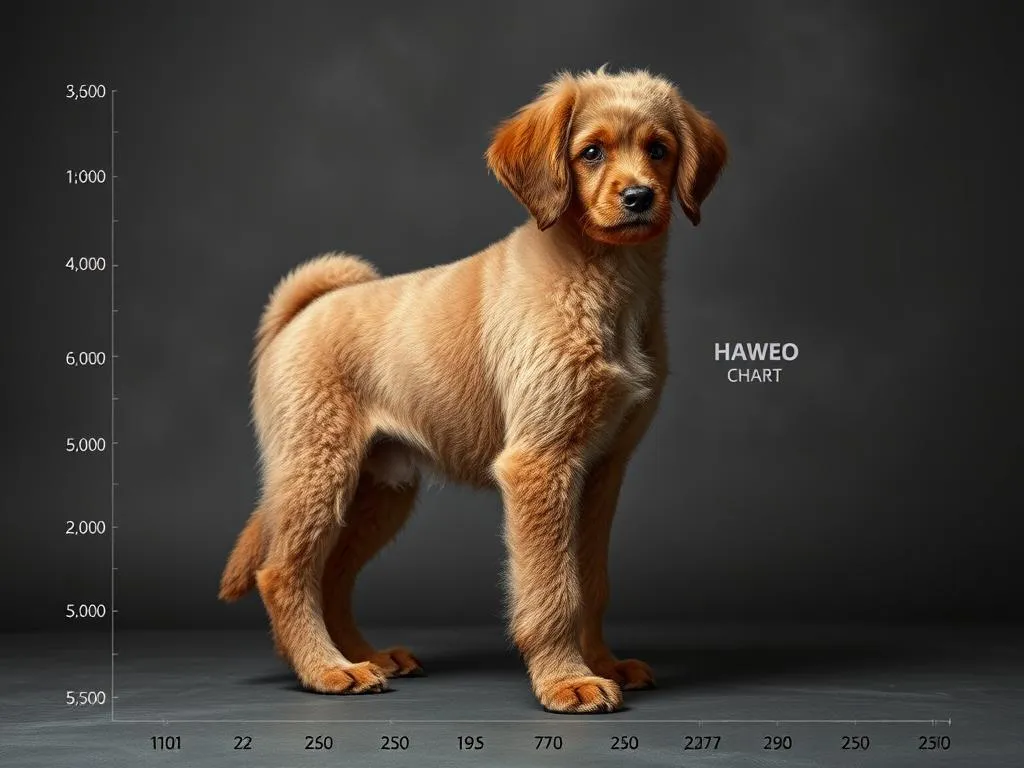
Introduction
The Havapoo is a delightful hybrid breed, a combination of the Havanese and the Poodle, known for its affectionate nature and intelligence. Understanding the Havapoo size, weight, and growth chart is crucial for new dog owners and prospective Havapoo parents who want to ensure their furry friends grow up healthy and happy.
In this article, we will explore everything you need to know about Havapoo health care, including detailed insights into their size and weight growth patterns, essential health care tips, common health issues, grooming needs, and training. By the end, you will be well-equipped to provide the best care for your Havapoo.
Understanding the Havapoo Breed
Breed Overview
The Havapoo is a fantastic blend of the playful Havanese and the intelligent Poodle. This hybrid breed typically inherits the best traits from both parents, resulting in a dog that is friendly, affectionate, and highly trainable. Havapoos are known for their sociable personalities and make excellent family pets. They are great with children and can adapt well to various living situations, from apartments to larger homes.
Size and Weight
When considering the Havapoo size, it’s important to note that they are generally small to medium-sized dogs. The average weight for an adult Havapoo ranges from 7 to 20 pounds, depending on whether they take after the smaller Havanese or the larger Poodle. Factors that influence their size and weight include genetics, diet, and overall health.
Havapoo Size and Weight Growth Chart
Growth Stages
Understanding the growth stages of a Havapoo is essential for monitoring their development:
- Puppy Stage (0-6 months): During this initial phase, Havapoos experience rapid growth. They typically double their birth weight within the first week.
- Adolescent Stage (6-12 months): Growth begins to slow down, but they may still gain weight and height as they approach their adult size.
- Adult Stage (1 year and above): By this stage, most Havapoos have reached their full size and weight, although some may continue to fill out.
Detailed Growth Chart
Here’s a detailed Havapoo size and weight growth chart that provides average weight and height benchmarks:
| Age (Months) | Average Weight (lbs) | Average Height (inches) |
|---|---|---|
| 0 | 1-2 | 8-10 |
| 1 | 2-4 | 9-11 |
| 2 | 4-7 | 10-12 |
| 3 | 6-10 | 10-12 |
| 4 | 8-12 | 11-13 |
| 5 | 10-14 | 12-14 |
| 6 | 12-16 | 12-14 |
| 7 | 14-18 | 12-15 |
| 8 | 15-20 | 13-15 |
| 9 | 15-20 | 13-15 |
| 10 | 15-20 | 13-15 |
| 11 | 15-20 | 13-15 |
| 12 | 15-20 | 13-15 |
Factors Affecting Growth
Several factors can affect a Havapoo’s growth:
- Nutrition: A balanced diet is vital for healthy growth. Quality puppy food with the right balance of protein, fats, and carbohydrates is essential.
- Exercise: Regular physical activity promotes muscle development and overall health.
- Health Conditions: Some medical issues can impact growth, so regular veterinary check-ups are essential.
General Health Care for Havapoos
Nutrition
To ensure optimal growth and health, proper nutrition is crucial. A balanced diet consisting of high-quality dog food tailored for small breeds will help your Havapoo thrive. It’s important to monitor portion sizes to prevent obesity, as small dogs can be prone to weight gain. Additionally, be aware of any common dietary restrictions or allergies, such as gluten or specific proteins.
Regular Veterinary Check-ups
Routine veterinary visits are vital for maintaining your Havapoo’s health. These check-ups allow for early detection of potential health issues. Vaccination schedules should be strictly followed, as they protect against various diseases. Common health issues to monitor include dental problems, skin allergies, and hip dysplasia.
Exercise Requirements
Havapoos require regular exercise to stay fit and mentally stimulated. A daily routine of walks, playtime, and interactive activities is ideal. Mental stimulation is equally important; consider puzzle toys or training exercises to keep their minds sharp. Fun activities such as fetch, agility training, or even swimming can be great for their physical and mental well-being.
Common Health Issues in Havapoos
Genetic Predispositions
Being a hybrid breed, Havapoos can inherit certain genetic disorders from their parent breeds. Common health issues include hip dysplasia, patellar luxation, and certain eye conditions. Responsible breeding practices are essential to reduce the risk of these genetic disorders.
Preventative Care
Preventative care is crucial for maintaining your Havapoo’s health. Spaying or neutering is recommended to prevent unwanted litters and can reduce the risk of certain health issues. Regular dental care is equally important, as small breeds can be prone to dental disease. Grooming needs should not be overlooked; regular brushing helps maintain a healthy coat and skin.
Recognizing Signs of Illness
As a responsible pet owner, it’s important to recognize signs of illness. Common symptoms to watch for include lethargy, loss of appetite, vomiting, or changes in behavior. If you notice any concerning signs, consult your veterinarian promptly.
Grooming and Maintenance
Coat Care
Havapoos have a beautiful, curly coat that requires regular grooming to prevent matting. Brushing at least once a week is recommended, and more often during shedding seasons. Using the right tools, such as slicker brushes and combs, will help maintain their coat’s health and appearance.
Nail Trimming and Ear Cleaning
Regular nail trimming is essential to prevent discomfort and mobility issues. Ideally, nails should be trimmed every 3-4 weeks. Additionally, cleaning your Havapoo’s ears regularly helps prevent infections. Use a vet-recommended solution and a cotton ball to gently clean the outer ear.
Bathing Schedule
Bathing your Havapoo should be done as needed, typically every 4-6 weeks. Using a gentle, dog-specific shampoo will keep their coat clean without stripping natural oils. If your Havapoo has sensitive skin, look for hypoallergenic options.
Training and Socialization
Importance of Training
Training is crucial for a well-adjusted Havapoo. Basic commands and obedience training should start early to establish good behavior. Positive reinforcement techniques work best with this breed, as they respond well to praise and rewards.
Socialization Techniques
Socialization is equally important for your Havapoo’s development. Introducing them to various people, pets, and environments helps them grow into well-rounded adults. Puppy classes or playgroups can provide excellent opportunities for socialization.
Conclusion
Proper health care for your Havapoo is vital to ensuring a long, happy life. By focusing on their nutrition, regular veterinary care, exercise, grooming, and training, you can provide the best environment for your pet. Remember, a healthy Havapoo is a happy Havapoo, and prioritizing their well-being will foster a loving bond that lasts a lifetime.









